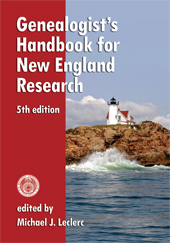 New England’s governmental organization is different from other areas of the United States, which can confuse genealogical researchers from outside the region. One major difference is in geopolitical subdivisions. Unlike other areas of the country, New England’s primary unit of government is the town. Continue reading New England towns, counties, and states
New England’s governmental organization is different from other areas of the United States, which can confuse genealogical researchers from outside the region. One major difference is in geopolitical subdivisions. Unlike other areas of the country, New England’s primary unit of government is the town. Continue reading New England towns, counties, and states
Monthly Archives: March 2014
An interview with David C. Dearborn
A milestone event in the life of NEHGS recently occurred when David Dearborn, one of our Senior Genealogists, retired on March 22 after a thirty-eight-year career here. His many accomplishments and dedicated service to NEHGS were honored by his colleagues at a festive celebration the week before. Although we know David will remain in close contact with us, and will visit often in order to carry out his own genealogical research, his daily presence in the library will be greatly missed. Continue reading An interview with David C. Dearborn
Object Lessons
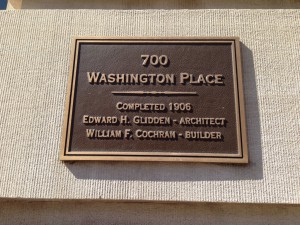 I recently paid a visit to Baltimore to photograph some of the surviving architectural commissions of my great-grandfather Edward Hughes Glidden. I had a great time traversing the city, from Battle Monument Square to Druid Hill Park, from the financial district to South and East Baltimore, and then out to Johns Hopkins’ Homewood campus, Roland Park, and Guilford.
I recently paid a visit to Baltimore to photograph some of the surviving architectural commissions of my great-grandfather Edward Hughes Glidden. I had a great time traversing the city, from Battle Monument Square to Druid Hill Park, from the financial district to South and East Baltimore, and then out to Johns Hopkins’ Homewood campus, Roland Park, and Guilford.
Some of Glidden’s buildings have fallen into disrepair – the Seventh Baptist and Second German Evangelical Churches are sad examples – while others are evidently well cared for and even loved. Best of all, on my first morning in the city I photographed the marker at the entrance to the Washington Apartments (1905–6) on Washington Place, where Glidden and his patron William F. Cochran are still memorialized. Continue reading Object Lessons
What we inherit, or, critical analysis
 The seventy-ninth anniversary of my parents’ marriage falls on 30 March 2014. They were married for 71 years before my mother’s death at age 99 years, 6 months, and 9 days in 2006. Mom was my connection to genealogy. Her mother was the last of her branch of the family and inherited and treasured all of the possessions, lore, and memories that came down to her. They’ve all been passed to me now. Continue reading What we inherit, or, critical analysis
The seventy-ninth anniversary of my parents’ marriage falls on 30 March 2014. They were married for 71 years before my mother’s death at age 99 years, 6 months, and 9 days in 2006. Mom was my connection to genealogy. Her mother was the last of her branch of the family and inherited and treasured all of the possessions, lore, and memories that came down to her. They’ve all been passed to me now. Continue reading What we inherit, or, critical analysis
Progress on Western Massachusetts Families in 1790
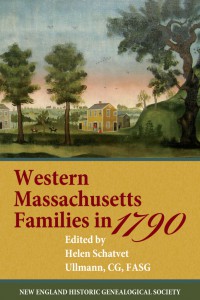 After publication of Western Massachusetts Families in 1790 in book form, the project continues as a database on AmericanAncestors.org and is becoming a more and more useful resource. While there were some 14,171 households listed in Berkshire and Hampshire Counties in 1790, one might think there would be few connections between the almost randomly distributed sketches in the project. But there are. Just the other day, in a sketch of Joseph Brown, I recognized his daughter Freelove’s husband, William Jenks, as a child in the sketch of Edmund Jenks, published online several months ago. And this is not the first time that’s happened. Continue reading Progress on Western Massachusetts Families in 1790
After publication of Western Massachusetts Families in 1790 in book form, the project continues as a database on AmericanAncestors.org and is becoming a more and more useful resource. While there were some 14,171 households listed in Berkshire and Hampshire Counties in 1790, one might think there would be few connections between the almost randomly distributed sketches in the project. But there are. Just the other day, in a sketch of Joseph Brown, I recognized his daughter Freelove’s husband, William Jenks, as a child in the sketch of Edmund Jenks, published online several months ago. And this is not the first time that’s happened. Continue reading Progress on Western Massachusetts Families in 1790
The Indian and African-American populations of Stoughton
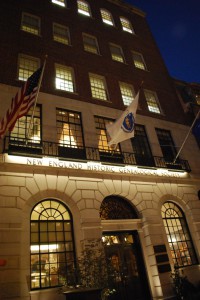 David Allen Lambert and Jennifer Pustz will speak at NEHGS on Wednesday, March 26, on “Uncovering African American Stories.”
David Allen Lambert and Jennifer Pustz will speak at NEHGS on Wednesday, March 26, on “Uncovering African American Stories.”
As a community historian for Stoughton, Massachusetts, I have studied all local families from the early eighteenth to the early twentieth centuries. Within Stoughton there was a population of Native Americans placed into the Praying Indian village of Punkapoag through the efforts of the Rev. John Eliot in 1657. As the Tribal Historian of the Massachuset-Punkapoag Indians, I have also spent many years researching the members of that community. Continue reading The Indian and African-American populations of Stoughton
Assorted populations of the Great Migration
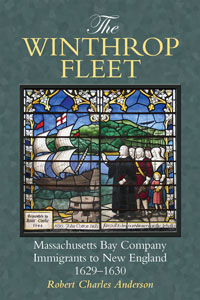 While the majority of the immigrants to New England between 1620 and 1640 were Puritans of some variety, a minority were conventional, conforming members of the Church of England, or of no particular religious persuasion at all. For example, West Country fishermen created settlements in Monhegan, Casco, and Richmond Island during the 1620s and early 1630s, accounting for (roughly) one thousand immigrants, or about five percent of the whole Great Migration. Continue reading Assorted populations of the Great Migration
While the majority of the immigrants to New England between 1620 and 1640 were Puritans of some variety, a minority were conventional, conforming members of the Church of England, or of no particular religious persuasion at all. For example, West Country fishermen created settlements in Monhegan, Casco, and Richmond Island during the 1620s and early 1630s, accounting for (roughly) one thousand immigrants, or about five percent of the whole Great Migration. Continue reading Assorted populations of the Great Migration
A serendipitous reunion
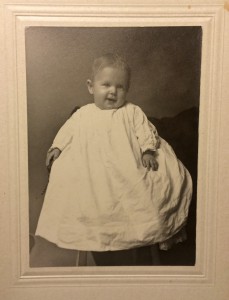 One fall weekend in 2008 my wife, Karen, and I were visiting her parents at their home on Long Island. After dinner one evening, my mother-in-law asked if I might like to see a collection of journals kept by her maternal grandfather, Glenn Welmer Douglass (1884–1968), a Methodist minister from New England.
One fall weekend in 2008 my wife, Karen, and I were visiting her parents at their home on Long Island. After dinner one evening, my mother-in-law asked if I might like to see a collection of journals kept by her maternal grandfather, Glenn Welmer Douglass (1884–1968), a Methodist minister from New England.
“Of course!” I said. Continue reading A serendipitous reunion
Inventorying the Early New England Families Study Project
 To access a list of families posted in the Early New England Families Study Project, go to SEARCH on the website americanancestors.org. Under CATEGORY select “Genealogies, Biographies, Heraldry and Local History” and under DATABASES select “Early Families of New England.” Click on VOLUME and all of the names of the heads of families in the database will appear. Continue reading Inventorying the Early New England Families Study Project
To access a list of families posted in the Early New England Families Study Project, go to SEARCH on the website americanancestors.org. Under CATEGORY select “Genealogies, Biographies, Heraldry and Local History” and under DATABASES select “Early Families of New England.” Click on VOLUME and all of the names of the heads of families in the database will appear. Continue reading Inventorying the Early New England Families Study Project
The last name’s the thing
As a genealogist at the New England Historic Genealogical Society, there are many aspects of my job that I truly enjoy – especially when it involves helping those new to the hobby of family history get off on the right foot. One of my favorite experiences is the chance that I have each college semester to interact with Boston University college students who sign up for a three-week family history program offered through B.U.’s Howard Thurman Center for Common Ground. As I write this, I will be introducing myself and the society to a new group this week, and I am looking forward to seeing where their various ancestries take us over the course of the program. Continue reading The last name’s the thing